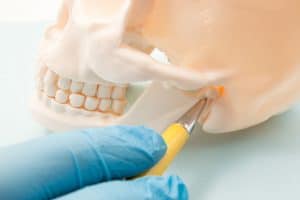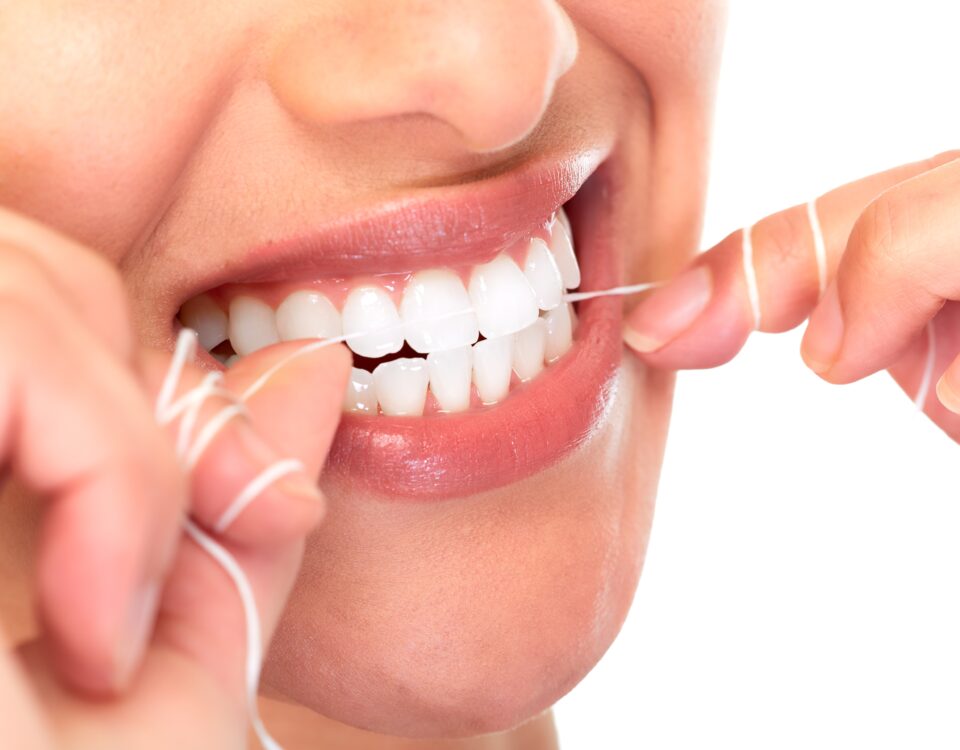Treating Temporomandibular Joint Disorder
How Digital X-rays Have Revolutionized The Dental Experience
September 5, 2019Protect Your Health With An Oral Cancer Screening
September 18, 2019Treating Temporomandibular Joint Disorder
Many dental patients suffer from bite issues, especially temporomandibular joint disorder, or TMD. This disorder is characterized by jaw pain when chewing, pain in the jaw joints and a locked jaw. Symptoms are different for everyone depending on their cause, but TMD can develop from a jaw injury, arthritis and disc erosion. To diagnose TMD, dental X-rays are taken to examine your teeth and jaw, and in severe cases, a CT scan or MRI might be necessary. Find out what options are available to treat your case of temporomandibular joint disorder with this guide!
What Is Temporomandibular Joint Disorder?
One of the more common bite issues that dentists treat is called Temporomandibular Joint Disorder, or TMD. The temporomandibular joints connect the lower jaw to the skull and are important for biting, chewing and eating. However, whenever TMD develops, you’re more likely to experience pain while doing simple jaw movements combined with muscle weakness in the face. Some of the following symptoms may be signs that you have TMD:
- Aching pain around the ear
- Facial pain
- Pain in one or both of the temporomandibular joints
- Jaw tenderness
- Headaches
- Difficulty opening mouth due to locked joint
Most patients will experience a combination of these symptoms with Temporomandibular Joint Disorder, and it can make speaking and eating difficult and painful. Some patients report a clicking sensation whenever they open their mouth or eat, and that’s a telltale sign of TMD, as well. However, if you aren’t experiencing any type of pain or problems moving your jaw when it clicks, you probably don’t have TMD. Either way, you should still meet with a dentist to discuss any changes in your jaw to make sure that everything is healthy.
Risk Factors For TMD
Temporomandibular Joint Disorder occurs for a variety of reasons, like genetics, jaw injuries, arthritis and bruxism, or teeth grinding. It usually is temporary and goes away on its own or with the help of nonsurgical treatments. Clenching or grinding your teeth can lead to TMD but not all patients who have this issue deal with TMD. In some cases, there is no connection to your TMD symptoms or other health issues you may have, so it can be difficult to diagnose what is causing your pain. If the joint’s cartilage, which helps keep the movement it makes smooth, is damaged, you can suffer from TMD. If a disc in your jaw becomes misaligned or erodes, you can also suffer from TMD pain when you bite or speak. There are even connective tissue diseases that affect how the temporomandibular joint moves, which increases your likelihood of suffering from TMD. Even arthritis, including rheumatoid arthritis and osteoarthritis, can damage the temporomandibular joint and cause TMD. There are a variety of ways that TMD develops, so it’s essential that you receive a thorough dental exam to determine what is causing your symptoms so that you can correctly treat it. These exams often include dental X-rays to properly examine your jaw and teeth, but some patients will need a CT scan or MRI to see just how bad the damage is.
Treating TMD Symptoms
In most cases, TMD will resolve without the use of surgical intervention. In severe cases, though, surgery may be the best option if other conservative measures have not worked. To begin, it is a good idea to eat softer foods until TMD disappears. This includes food like mashed potatoes, yogurt, fish, beans, scrambled eggs and those that require little to no chewing. Try to avoid large foods that you have to open your mouth wide to eat and crunchy foods like apples and carrots. Some patients’ symptoms will completely disappear after a few weeks of eating soft foods, but others will require further treatment to completely heal. Applying ice packs and moist heat can help calm the muscles in your face, along with specific face exercises that require you to gently pull your apart with your hands. You may even need a splint on your teeth to keep your upper and lower teeth from coming together. This process prevents you from clenching and grinding your teeth, which takes pressure off of the jaw joints. Your dentist may prescribe you medication to reduce pain and swelling, as well. Muscle relaxants, antianxiety and antidepressant medications are often prescribed to TMD patients and help loosen tight jaw muscles, relieve stress and eliminate pain. Once you’ve been evaluated by your dentist, he/she can develop a treatment plan that fits your needs and addresses the triggers of your pain.
Eliminate Temporomandibular Joint Disorder Today!
At Mountain Aire Dentistry, we are experienced in treating Temporomandibular Joint Disorder and can help you get back to eating and speaking normally again. If you’re having problems with your jaw, call our office today at (303) 731-7755 to meet with Dr. Bockrath and his staff. We can ensure that you’ll have a comfortable experience and that you’ll leave with more confidence and less pain. Call today to start your journey towards a healthier mouth!
When you visit our Broomfield dental office, your smile is our top priority. Our Dentists invite you to experience the difference a warm and caring team can provide for you and your family. Enjoy a unique and comfortable dental experience designed to bring a healthier and happier smile back into your life. We invite you to call or visit our Broomfield dental office and discover the exceptional difference we offer to those we serve.















